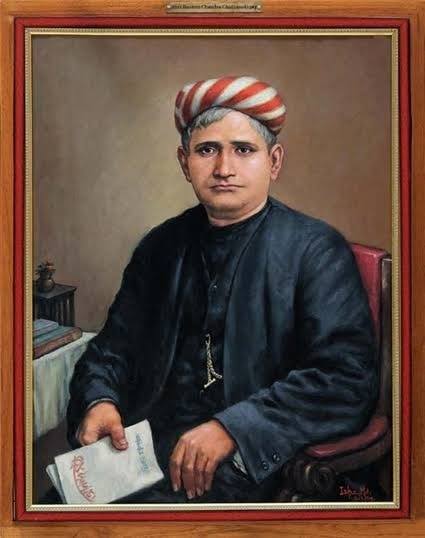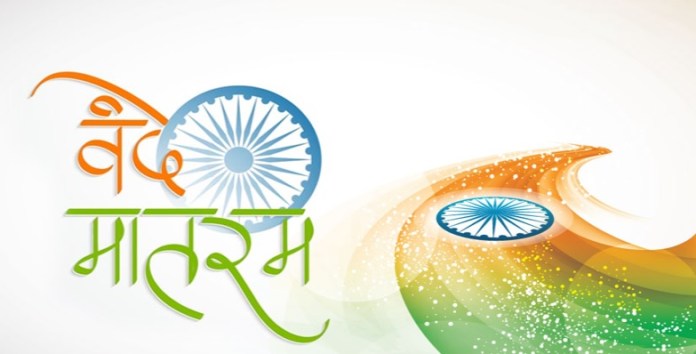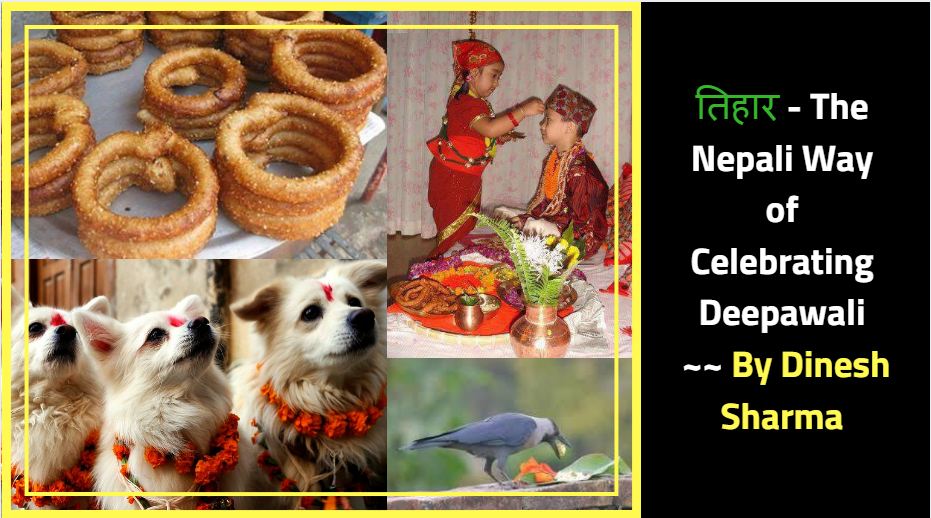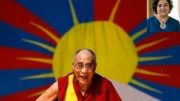This year, November 07, 2025, marks the 150th anniversary of India’s National Song Vande Mataram, which translates to “Mother, I Bow to Thee”. This composition, an enduring anthem, has inspired countless generations of freedom fighters and nation builders, standing as a lasting emblem of India’s national identity and collective spirit. Composed by Bankim Chandra Chatterjee, ‘Vande Mataram’ was first published in the literary journal Bangadarshan on 7 November 1875. Later, Bankim Chandra Chatterjee incorporated the hymn in his immortal novel ‘Anandamath’ which was published in 1882. It was set to music by Rabindranath Tagore. It has become an integral part of the nation’s civilizational, political and cultural consciousness. Commemorating this milestone presents an occasion to reaffirm the timeless message of unity, sacrifice, and devotion that Vande Mataram embodies for all Indians.
Historical Background
To comprehend the importance of Vande Mataram, it is imperative to examine its historical origins, a path that connects literature, nationalism, and India’s fight for independence. The development of the hymn from a poetic composition to a national song exemplifies India’s collective awakening against colonial dominance.
- The song was first published in 1875. This is corroborated by a passage in the English daily Bande Mataram written by Sri Aurobindo on 16 April 1907, that it was thirty-two years ago that Bankim composed his renowned song. He further observed that few listened at that time, but during a moment of awakening from long delusions, the people of Bengal looked around for truth, and in a fated moment, someone sang “Bande Mataram.”
- Prior to its publication in book form, Anand Math was serialised in the Bengali monthly magazine Bangadarshan, of which Bankim was the founder editor.
- The song “Vande Mataram” appeared in the very first instalment of the serialisation of the novel in the March-April 1881 issue.
- In 1907, Madam Bhikaji Cama raised the tricolour flag for the first-time outside India in Stuttgart, Berlin. The words Vande Mataram were written on the flag.
Ananda Math and the Religion of Patriotism
The central plot of the novel ‘Ananda Math’ revolves around a group of Sanyasins known as Santanas, meaning children, who dedicate their lives to the cause of their motherland. They venerate the motherland personified as the mother goddess; their devotion is solely to their land of birth. “Vande Mataram” is the song sung by the Santanas of Ananda Math. It stood as the symbol of the “religion of patriotism” that was the central theme of Ananda Math
In their temple, they placed three images of the mother representing the motherland: Mother that was, great and glorious in her majestic grandeur; Mother that is wretched and grovelling in the dust; Mother that will be, in her pristine glory. In the words of Shri Aurobindo ” The Mother of his vision held trenchant steel in her twice seventy million hands and not the bowl of the mendicant.”
Bankim Chandra Chatterjee

Bankim Chandra Chatterjee (1838–1894), the author of Vande Mataram, was one of the most prominent figures of 19th-century Bengal. He holds a pivotal role in the intellectual and literary history of Bengal during the nineteenth century. As a distinguished novelist, poet, and essayist, his contributions significantly influenced the development of modern Bengali prose and the articulation of an emerging Indian nationalism.
His notable works, including Anandamath (1882), Durgeshnandini (1865), Kapalkundala (1866), and Devi Chaudhurani (1884), reflect the social, cultural, and moral concerns of a colonised society striving for self-identity.
The composition of Vande Mataram, is recognised as a milestone in nationalist thought, symbolising the synthesis of devotion to the motherland and spiritual idealism. Through his writings, Bankim Chandra Chatterjee not only enriched Bengali literature but also laid the foundational ideological principles for India’s early nationalist movement. In Vande Mataram he gave the country the vision of the motherland personified as the Mother.
Vande Mataram – Song of Resistance
In October 1905, a Bande Mataram Sampradaya was founded in North Calcutta to promote the idea of the Motherland as a mission and a religious passion. Every Sunday, the members of the society went out in Prabhat Pheris, singing “Vande Mataram” and accepting voluntary contributions from the people insupport of the motherland. Rabindranath Tagore also sometimes joined the Prabhat Pheris of the Sampradaya.
On 20 May 1906, in Barisal (now in Bangladesh), an unprecedented Vande Mataram procession took place, with over ten thousand participants, both Hindus and Muslims marching through the main streets of the town carrying Vande Mataram flags.
In August 1906, an English daily titled Bande Mataram was launched under the editorship of Bipin Chandra Pal, with Sri Aurobindo later joining as joint editor. Through its sharp and persuasive editorials, the newspaper became a powerful instrument of India’s awakening, spreading the message of self-reliance, unity, and political consciousness to an all-India audience. Fearlessly preaching the gospel of nationalism, inspiring young Indians to rise above colonial subjugation, the Bande Mataram daily served as a major platform for articulating nationalist thought and mobilising public opinion.
Alarmed by the rising influence of Vande Mataram—both as a song and slogan—the British administration adopted stringent measures to curb its spread. The Government of the newly created province of Eastern Bengal issued circulars prohibiting the singing or chanting of Vande Mataram in schools and colleges. Educational institutions were warned of derecognition, and students participating in political agitation were threatened with debarment from government service.
In November 1905, a fine of Rs 5 was imposed on each of the 200 students of a school in Rangpur, Bengal, as they were guilty of chanting Vande Mataram. In Rangpur, prominent anti-partition leaders were instructed to serve as special constables and to prevent the chanting of Vande Mataram. In November 1906, at a largely attended meeting held at Dhulia (Maharashtra), cries of Vande Mataram were raised. In 1908, at Belgaum (Karnataka), on the day Lokmanya Tilak was being deported to Mandalay in Burma, the police thrashed many boys and arrested many persons for chanting Vande Mataram against a verbal order prohibiting the same.
Battle Cry for Resurgent Nationalism
The song “Vande Mataram” became the emblem of India’s struggle for independence, encapsulating the collective aspiration for self-governance and the emotional connection between the populace and their homeland. Initially popularised during the Swadeshi and anti-partition movements, it quickly transcended regional barriers to serve as the anthem of national awakening. From Bengal’s streets to Bombay’s core and Punjab’s plains, the refrain of “Vande Mataram” echoed as a symbol of resistance against colonial rule. The British endeavours to suppress its rendition only amplified its patriotic significance, transforming it into a moral force uniting individuals across caste, creed, and language. Leaders, students, and revolutionaries drew motivation from its verses, reciting it at political assemblies, demonstrations, and prior to incarceration. The composition not only motivated acts of defiance but also infused the movement with cultural pride and spiritual zeal, establishing the emotional groundwork for India’s path to independence.
“Vande Mataram” emerged as the rallying cry of rising Indian nationalism in the late nineteenth and early twentieth centuries.
- Vande Mataram was sung at the 1896 session of the Congress by Rabindranath Tagore.
During the stormy days of 1905, the anti-partition and Swadeshi movement in Bengal, the appeal of the song as well as of the slogan Vande Mataram, became very powerful.
- At the Varanasi session of the Indian National Congress that same year, the song ‘Vande Mataram’ was adopted for all-India occasions.

In April 1906, during the Bengal Provincial Conference at Barisal in the newly created province of Eastern Bengal, the British authorities banned the public chanting of Vande Mataram and eventually prohibited the conference itself. Defying the order, delegates continued to raise the slogan and faced severe police repression.
In May 1907, in Lahore, a group of young protesters marched in defiance of colonial orders, raising the slogan Vande Mataram to condemn the arrest of Swadeshi leaders at Rawalpindi. The demonstration was met with brutal police repression, yet the youth’s fearless chanting of the slogan reflected the growing spirit of resistance spreading across the country.
On 27 February 1908, around a thousand workers of the Coral Mills in Tuticorin (Tamil Nadu) went on strike in solidarity with the Swadeshi Steam Navigation Company and against repressive actions by the authorities. They marched through the streets late into the night, chanting Vande Mataram as a mark of protest and patriotism.
In June 1908, thousands gathered outside the Bombay police court during Lokmanya Tilak’s trial, singing Vande Mataram in a powerful display of solidarity. Later, on 21 June 1914, Tilak received a grand welcome in Pune upon his release, with the crowd echoing Vande Mataram long after he had taken his seat.
Impact on Indian Revolutionaries Abroad
- In 1907, Madam Bhikaji Cama raised the tricolour flag for the first-time outside India in Stuttgart, Berlin. The words Vande Mataram were written on the flag.
- On 17 August 1909, when Madan Lal Dhignra was hanged in England, his last words before he went to the gallows were “Bande Mataram.”
- In 1909, Indian patriots in Paris undertook the publication of a magazine called Bande Mataram from Geneva.
- In October 1912, when Gopal Krishna Gokhale arrived in Cape Town, South Africa, he was welcomed by a grand procession accompanied by cries of ‘Vande Mataram.’
National Status
In the Constituent Assembly there was absolute unanimity over adopting both Jana Gana Mana and Vande Mataram as National symbols, and there was no debate on the issue. On 24 January 1950, Dr. Rajendra Prasad addressed the Constituent Assembly, stating that Vande Mataram, due to its significant role in the freedom movement, should have the same status as the National Anthem, Jana Gana Mana, and be honored equally. He said,
“There is one matter which has been pending for discussion, namely the question of the National Anthem. At one time it was thought that the matter might be brought up before the House and a decision taken by the House by way of a resolution. But it has been felt that, instead of taking a formal decision by means of a resolution, it is better if I make a statement with regard to the National Anthem. Accordingly I make this statement.
The composition consisting of the words and music known as Jana Gana Mana is the National Anthem of India, subject to such alterations in the words as the Government may authorise as occasion arises; and the song Vande Mataram, which has played a historic part in the struggle for Indian freedom, shall be honoured equally with Jana Gana Mana and shall have equal status with it. (Applause). I hope this will satisfy the Members.”
His statement was adopted with Rabindranath Tagore’s Jana-Gana-Mana being adopted as the national anthem of independent India, and Bankim’s Vande Mataram being adopted as the National Song with an equal status as Jana-Gana-Mana.
Commemorating 150 Years of Vande Mataram
As the nation celebrates 150 years of Vande Mataram, commemorative activities across India seek to honour its enduring legacy as a song of unity, resistance, and national pride. Institutions, cultural bodies, and educational centres are organising seminars, exhibitions, musical renditions, and public readings to revisit the song’s historical and cultural significance.
The Government of India will commemorate this in four phases.

A Few of the activities are listed below.
On 7th November 2025
- National Level inaugural programme of the commemoration to be held in Delhi (Indira Gandhi Stadium).
- VIP events with widespread public participation will be held across the country till the tehsil level on 7 November.
- A commemorative stamp and coin will be released at the national event.
- An exhibition on the history of Vande Mataram will be organised, and a short film will be screened.
- Films of the stamp and coin releases will be shown at every official event.
- Photos and videos of the events will be uploaded to the campaign website.
- At the national level, the programme features prominent singers from across the country presenting different adaptations of Vande Mataram.
Yearlong Activities
- Special programmes to be hosted on All India Radio and Doordarshan and FM radio campaign.
- PIB to organize panel discussions and dialogues on Vande Mataram in Tier 2 and 3 cities.
- A cultural evening dedicated to the spirit of Vande Mataram to be organized in all Indian Missions and Posts across the world.
- A global music festival dedicated to the spirit of Vande Mataram to be organised.
- Vande Mataram: Salute to Mother Earth – Tree plantation drives to be organised.
- Patriotic murals to be created and displayed on highways.
- Audio messages and special announcements to be made. LED displays at railway stations and airports are to display information about Vande Mataram.
Special Activities
- 25 films of 1 minute each on different facets of Vande Mataram, the Life story of Bankim Chandra Chatterjee, the role of Vande Mataram in the freedom struggle, and the history of India to be made, and outreach to be done via social media.
- To channelise the energy of patriotism, the Vande Mataram Campaign and the Har Ghar Tiranga Campaign will be celebrated simultaneously
These initiatives not only pay tribute to Bankim Chandra Chattopadhyay’s timeless creation but also highlight its role in inspiring generations during the freedom struggle. Through these celebrations, the spirit of Vande Mataram is being reinterpreted for contemporary India—linking the nation’s proud past with its aspirations for a united, self-reliant, and culturally vibrant future.
Conclusion
The commemoration of 150 years of Vande Mataram underscores the song’s profound historical and cultural significance in the evolution of India’s national identity. Emerging from the intellectual and literary milieu of the late nineteenth century, Vande Mataram transcended its literary origins to become a potent symbol of anti-colonial resistance and collective aspiration. The present observance not only reaffirms the enduring relevance of Bankim Chandra Chattopadhyay’s vision but also invites renewed reflection on the song’s role in shaping the discourse of nationalism, unity, and cultural self-awareness in modern India.






Be the first to comment on "150 Years of Vande Mataram – A Melody That Became a Movement"